The process of making mezcal is a true art. Each little detail makes a big impact on the final product, and unlike many other spirits, traditional mezcal is made without the use of large industrial machinery that is designed to make the precise calculations easier. With traditional mezcal, it’s all done by hand. Everything from the flavor to the aromas to the ABV is defined by micro-decisions that the maestro mezcalero makes throughout the several-week process that it takes to produce a batch of mezcal.
Wahaka Mezcal was one of the first brands that got me excited about mezcal and how it was created. I’d been sipping agave Espadin for several years, but I hadn’t had much exposure to mezcal made with wild agave until I tasted the Wahaka Madre-cuishe. It was far sweeter and more vegetal than any of the mezcals I’d previously tried, and it got me interested learning more about how different mezcals could have such wildly different flavors.
Getting to Wahaka
Earlier this spring, we had the opportunity to visit the Wahaka Mezcal palenque (distillery) in San Dionisio Ocotepec, Oaxaca to learn more about the process that defines each batch. The drive out to the Wahaka palenque is incredible. We took a slightly longer route that headed south on route 175 out of Oaxaca City and then shot East through Santa Catarina Minas and San Baltazar Chichicapam. The road twists through beautiful countryside that offers fantastic views of the mountainous and rugged terrain. We pulled into the Wahaka palenque and were greeted by their maestro mezcalero, Alberto Morales and his brother-in-law. They had just cooked a batch of agave, and the smell of freshly smoked pinas (agave hearts) filled the air.
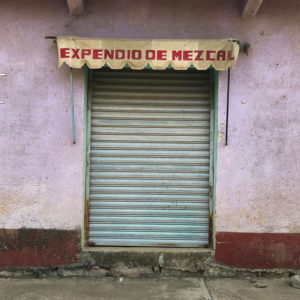
The old storefront outside the Wahaka Palenque
Selecting Agave
One of the biggest factors in mezcal production is the agave that is used. According to the Consejo Regulador del Mezcal, about 85% of certified mezcal is made with agave Espadin. The other agave varieties create very unique profiles based on the terrain in which they’re grown and myriad other factors related to the 8-25+ years that it takes for the them to reach maturity. The maestro mezcalero must be diligent with the agave being used, knowing that “a few bad apples can spoil the batch.”
Alberto and his team closely examine all of their agave before production. They let all of their agave grow to the natural maturity before harvesting, so they’re really just checking for anything that may add unintentional funk to their spirits. They currently use the following types of agave in various different batches: Espadin, Madre-cuishe, Tobala, Tepeztate, and Jabali.
The Stone Oven
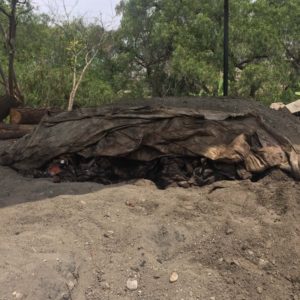
The horno (stone oven) full of freshly cooked agave.
Like other traditional mezcals, Wahaka uses a horno (pit oven) to cook their agave. The horno (as pictured) is made from a hole in the ground that is lined with volcanic rock, which gets extremely hot from the the burning wood that is used to heat the oven. Once the oven is hot with smoking wood and heat from the volcanic rocks, the agave is added and several layers of soil, agave leaves, and cloth are piled on top to insulate the smoldering pile of agave. Depending on the type of agave, this smoking can take 3-5 days.
We tasted some of the freshly cooked agave before it was further processed. The cooked agave is sweet and juicy. It has lots of sugar and the fibers pull apart into delicious strips that taste like a cross between cooked apples and wet dates.
Milling and Fermentation
Once the agave is cooked, it’s milled by horse-drawn tahona, which is a giant stone wheel that rolls over the cooked agave. This process breaks down the agave fibers and helps release the sugars for fermentation. The horse pulling the tahona at the Wahaka palenque is named Pacquiao. He had another name originally but once he proved to be very strong they decided to name him after the famous boxer.
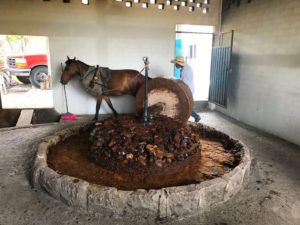
Cooked agave being milled by horse-drawn tahona before fermentation
Once milled, the agave pulp is fermented in open air wooden tanks for several days. It’s intentionally exposed to the elements, as the natural yeast in the air interacts with the agave sugars to create alcohol. After 5-7 days in the open air, the liquid is at about 8% ABV, and is ready to be distilled. There are tools for measuring the ABV and other chemical levels, but mezcaleros like Alberto Morales are able to gauge the chemical compounds within a fraction of a percent just by tasting and observing the fermenting liquid. They do this by using a long piece of semi-hollow bamboo, which they use to draw out a sample of the fermenting agave juice. Using the taste and texture as a guide, they can gauge whether it’s ready to be distilled.
Distillation
Wahaka Mezcal uses traditional copper stills for almost all of their mezcals. Their tasty vegetarian pechugas are made in clay-pot stills, but their core releases are all made in copper. They were actively distilling while we were at the palenque, and the heat that radiated from the still was incredible. Their palenque has two stills and only one of them had an active fire, but it was enough to heat the entire space (as if the extra heat was needed!).
Most of Wahaka Mezcal is twice distilled. The main exception is their Jabali, which reportedly took upwards of five distillations due to the Jabali agave’s cantankerous and rugged character. It overflowed in the first distillation for Wahaka, and we’ve heard reports that Jabali batches have blown up and destroyed stills at other palenques. The first few runs of the Wahaka Jabali left the alcohol with a greenish coloration that was pulled out with a few more runs through the still. Tasting the finished mezcal, you wouldn’t really notice a difference.
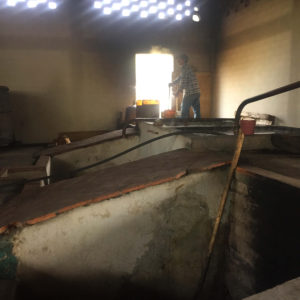
Two copper stills used in the distillation of Wahaka Mezcal.
Everything other than the Jabali follows a similar process for distillation. When distilling agave, not all of the mezcal that comes out of the still is equal. There is the puntas (heads or tip) that comes out first, which is typically 60-75% ABV and can contain high levels of methanol. The hearts are next out of the still, and they make up the majority of the usable production with an ABV between 40-60%. Finally, the colas (tails) are released, which contain low amounts of alcohol and are often too bitter, acidic or oily to be added to the final product. Again, the chemical contents of the liquid in the still are gauged mostly by hand, which is incredible!
Wahaka Mezcal only uses the hearts for the products that they bottle and sell. They distill most of their mezcal to around 55-60% ABV and then make adjustments to bring it down to somewhere between 40-50%, depending on the release. We tried some Tepextate that was fresh off the still (before adjustment), which was super delicious, but definitely much hotter than the stuff you’d find on the shelf.
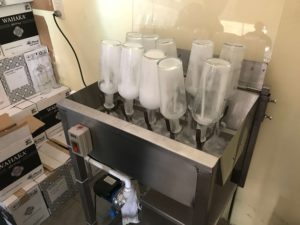
What’s the best way to clean empty bottles? With mezcal, of course.
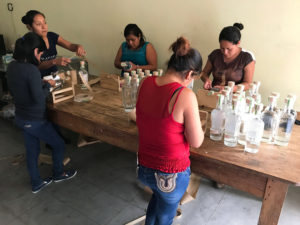
Adding labels to new Wahaka Mezcal bottles.
Bottling
The Wahaka crew walked us through their bottling room, where we saw their labeling and packaging. They also showed us their interesting method for cleaning bottles. I’ve always thought that mezcal had a cleansing effect on the body and mind, but Wahaka actually cleans the insides of their bottles with mezcal instead of soap. Soap leaves a residue that could impact flavor, so they use high ABV mezcal to wash and purify the glass. Perhaps they’ll be giving Dr Bronner’s a run at the organic cleaning industry soon.
Alberto Morales and Team Wahaka
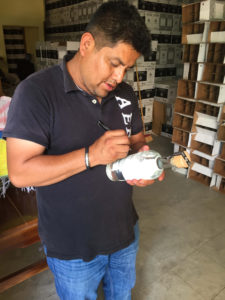
Maestro Mezcalero Alberto Morales signing a special bottle of Tepextate.
After the bottling room, we sat down in the shade and tasted most of their lineup of 10+ bottles, including an incredible vegetarian pechuga, the Wahaka Espadin Botaniko. They explained that we were at their main palenque, but that they have 6 palenques total in order to keep up with demand. Alberto Morales learned how to make mezcal from his father. His family has been making mezcal for five generations, and his uncle, who lives across the street, makes mezcal for Bruxo.
Though mezcal is a long tradition in his family, Wahaka Mezcal is somewhat young. After making mezcal for several decades that was sold primarily in Oaxaca, Alberto decided that he wanted to share his craft with the world. Along with his friends and colleagues, they created the label Wahaka, which is the English spelling for the state in which he lives. This project was originally meant to target audiences in the United States, which at the time was a relatively untouched mezcal market.
He and his family have sold several generations-worth of mezcal under different names, but the first cases of Wahaka were sold in the US. They distribute in Mexico as well, but about 80% of Wahaka is currently sold outside of Mexico. They’re always innovating the mezcal they produce, as seen in the new vegetarian pechugas that are available across the US. They also recently updated their labels and bottles to give them more meaning and to make them easier to see at bars and in liquor stores. If you look at the logo on their new bottles, you’ll see that it now depicts the process of making mezcal from the raw agave to the mezcal that we enjoy.


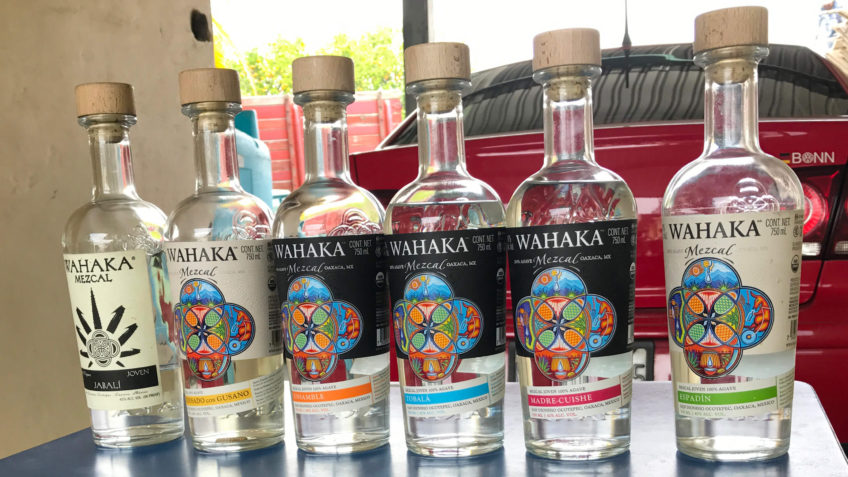


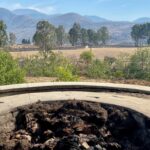
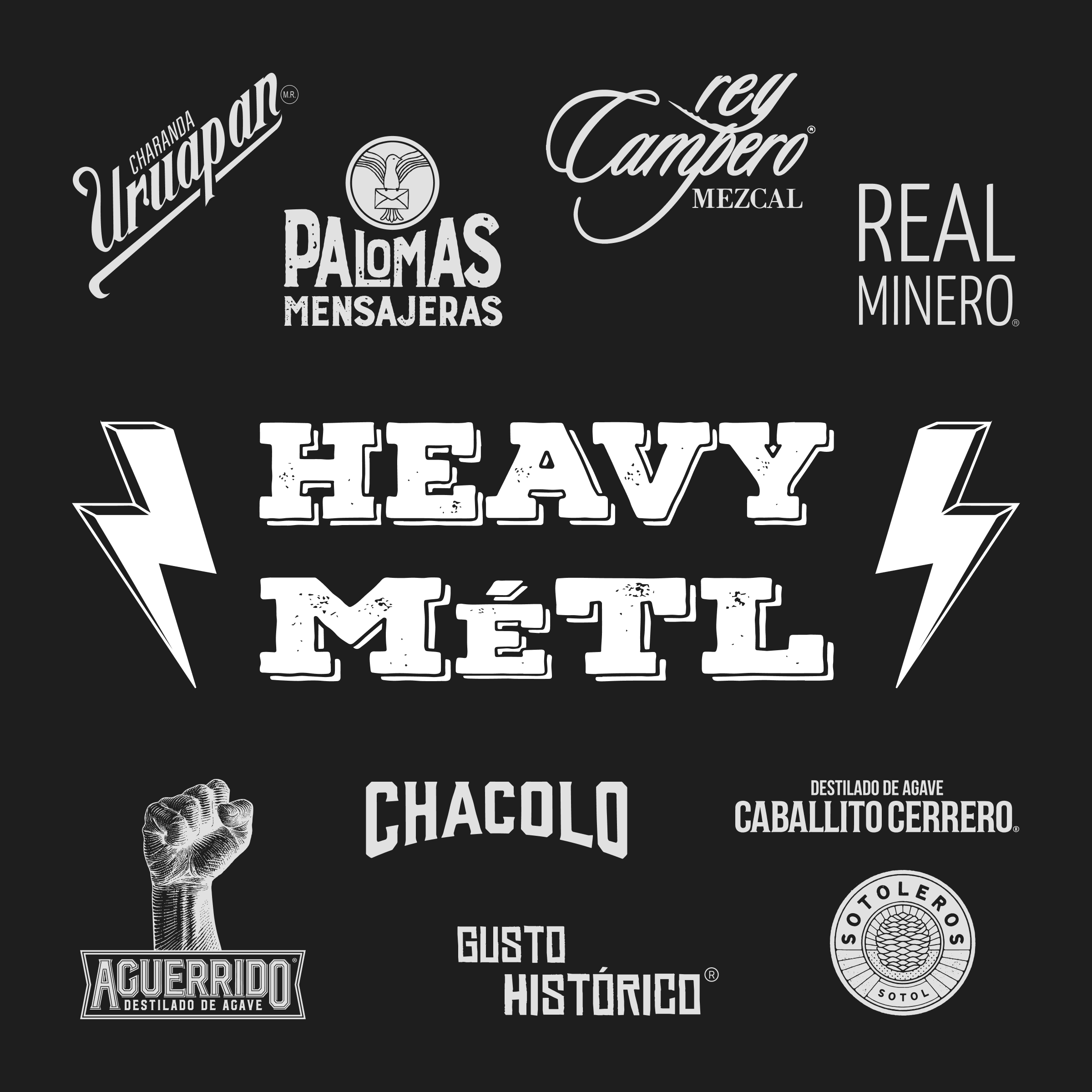
pallzley
6 years agoVery cool!
Do you mean to say, when describing the different alcoholic strengths at the still, that the parts of the agave are cooked and separated first by parts (puntas, heart, tail, etc)?
Also, do the puntas really yield high amounts of methanol? Any methanol at all? I thought it was all ethanol, but I would appreciate the confirmation.
Thank you very much for sharing.
zach
3 years agono they are talking about the distillation cuts. you need to learn how alchohol is disitlled. the heads can contain a lot of methanol and acetone ( all produced by fermentation along with ethanol in majority) but are a small fraction of the overall volume.
@agave.101
3 years agoMethanol is one of the alcohols in the agave mash. When distilled, they are the first to evaporate and condense, so “puntas” have more methanol.
Some producers add that back at the end as puntas are also mixed with terpenes: volatile compounds which carry a lot of flavor.
Having high levels of methanol are not allowed by standard of Mezcal production, but I have read this is most likely not a toxic range which can produce severe side efects, and could potentially be very delicious, so may be worth the risk!